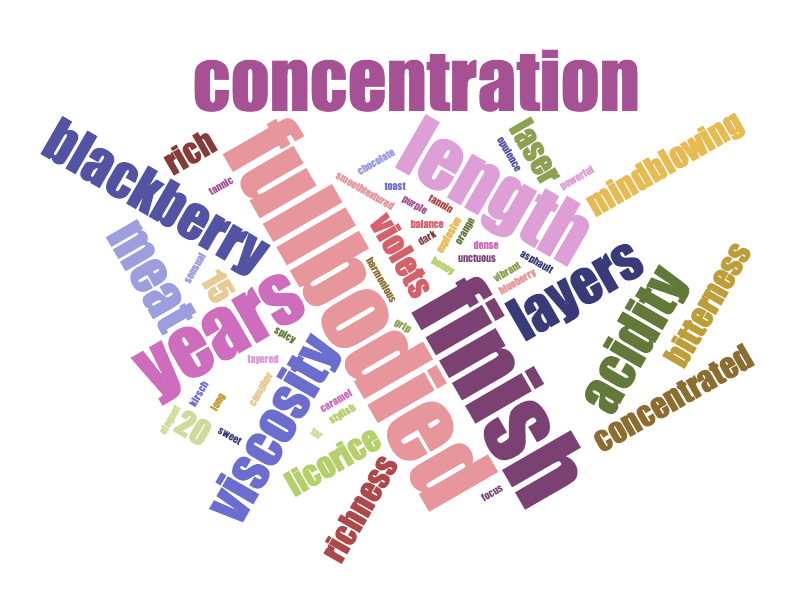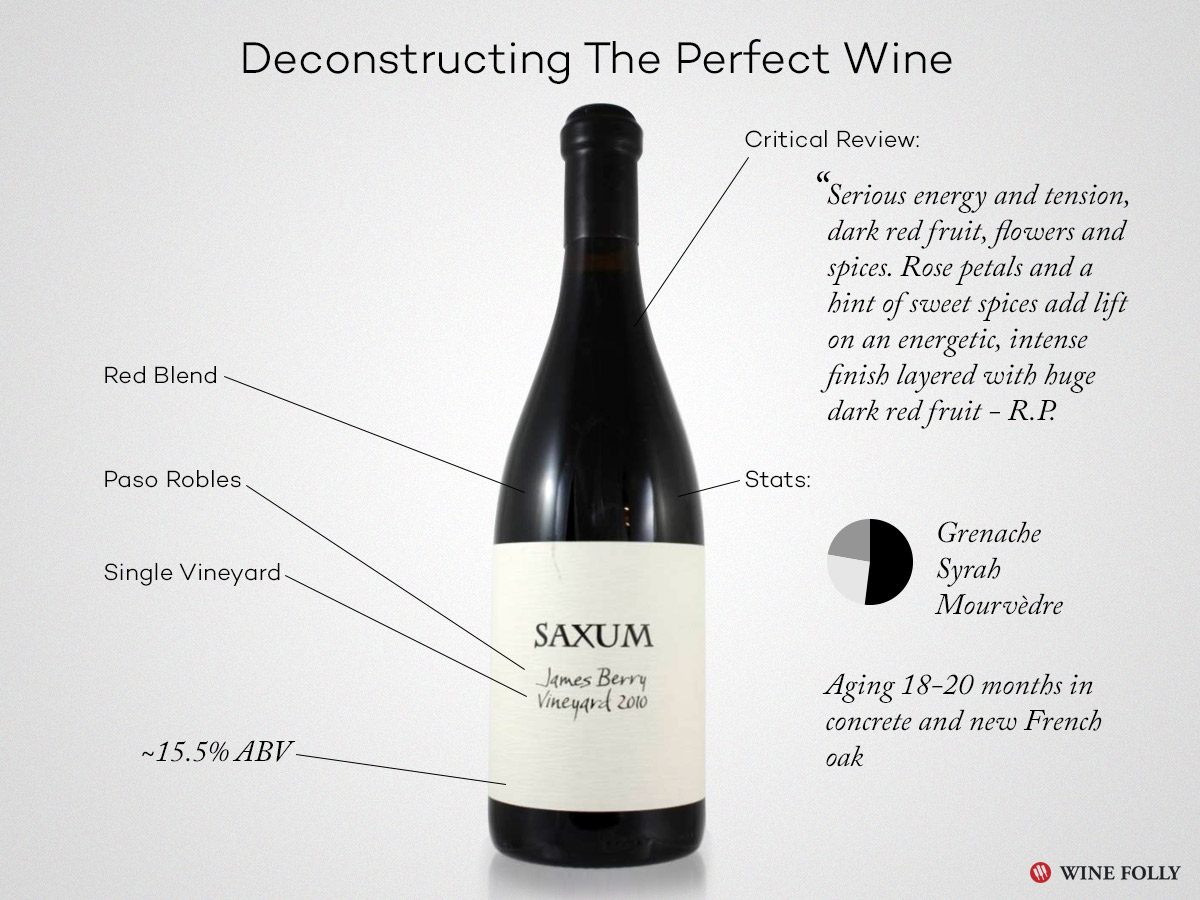The ‘perfect’ wine rides a line between intensity and sumptuousness. It has haunting aromas that astound your senses and the taste continues to evolve with layers of complexity that last a long time. Some people disagree and believe that perfection can’t be reached; but why deny the possibility that it exists? Especially if you are lucky enough to find one.
So what makes a wine perfect?
We carefully inspected wines with perfect point scores and looked for patterns in production. Yes, one could argue that it’s wicked and outright irresponsible to do this because ‘perfection’ is a matter of taste. However, there were some consistent themes that might surprise you. If anything, use this as inspiration to identify your own version of perfection and figure out how to get more of it.
Deconstructing The Perfect Wine
The Perfect Wine Aroma & Flavor

Common words used in describing today’s ‘perfect’ wines.
Nearly every wine we analyzed had the terms ‘Concentration’ or ‘Full-Bodied’ somewhere in the review. The list of perfect scores included an Alsacian Gewürztraminer, a Sonoma Chardonnay and Vintage Port, but over 90% of the wines were red. Most of these red wines were Cabernet-based blends and there were a large amount from Napa or Bordeaux. With numbers like this, it’s no surprise that:
“Cabernet is now the most planted wine variety in the world.”
The other red wines included Grenache, Syrah, Pinot Noir, Nebbiolo and Sangiovese. Sadly, there were not very many esoteric grape varieties. We found ourselves wondering: are these unique varietal wines lower quality, or are they just not that popular?
The Traits of Perfect Wine
1. Most ‘perfect’ wines are blends.
Wine blends that included a primary grape followed by small portions of support grapes for added dimension was a big theme. The blends had anywhere from 45% to 95% of a single grape variety. For example, the top scoring Cabernet Sauvignon by Kapcsandy Family Winery had 95% Cabernet, 4% Merlot and 1% Petit Verdot. These tiny proportions of other varieties were no doubt used like spices to finish the flavor.
2. ‘Perfection’ comes from a single location
Everything you hear about the importance of terroir might be true after all. The majority of the best wines came from a single vineyard or two close proximity vineyards that had vineyards older than 25 years. If vineyard location is so paramount to perfecting, then seeking out great vineyard sites is probably just as important as finding great wineries.
3. ‘Perfect’ wines are grown in the hills and rarely irrigated
Regardless of style, from German Riesling to Rhône Valley Syrah, the most loved wines tended to come from hillside vineyards. We also found it surprising that more than 10 of these wines were dry farmed (not irrigated). For example, the Douro Valley in Portugal doesn’t allow irrigation. These two factors cause extreme stress on vines which means they produce smaller, more concentrated grapes.
4. A ‘Perfect’ wine has higher alcohol
When you have concentrated grapes they are sweeter, and thus make higher alcohol wine. Besides a few rare examples of German Riesling, all the top picks had more than 14% ABV and usually closer to 15%. This is probably because alcohol adds texture, body and more aromas. No doubt there are several wines that taste amazing and have lower alcohol levels, but this was not the theme.
5. ‘Perfect’ wines are made with oak
Before wine bottles became popular in the 1800’s, all wine was stored in new oak barrels. This was because the cost of shipping empty barrels back was more expensive than just buying a new one. Today, oak-aging is more expensive compared to aging wine in stainless steel but apparently it’s worth it. Oak adds that ‘je ne sais quoi’ to a ‘perfect’ wine.
6. Perfect wines will age a long time
Of all the wines picked, all were estimated to last more than 15 years. This means the wines had to have balanced wine characteristics such as tannin, acidity and sweetness.
What’s Missing?
As much as the wines were ‘perfect’, we were surprised to see that critics completely avoid several other types of wine such as Cariñena, Mourvèdre or even Lambrusco. Perhaps the rules will change if we start looking for perfection in all nine different wine styles. The last hanging question was:
What defines a perfect wine for you?
